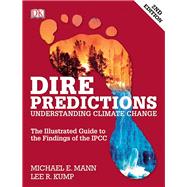For any science or social science course in need of a basic understanding of IPCC reports.
Periodic reports from the Intergovernmental Panel on Climate Change (IPCC) evaluate the risk of climate change brought on by humans. But the sheer volume of scientific data remains inscrutable to the general public, particularly to those who may still question the validity of climate change. In just over 200 pages, this practical text presents and expands upon the essential findings in a visually stunning and undeniably powerful way to the lay reader. Scientific findings that provide validity to the implications of climate change are presented in clear-cut graphic elements, striking images, and understandable analogies.
The Second Edition covers the latest climate change data and scientific consensus from the Fifth Assessment Report and integrates links to media and active learning to capture learning opportunities for students. The text is also available in various eText formats, including an upgrade option from MasteringGeography.








